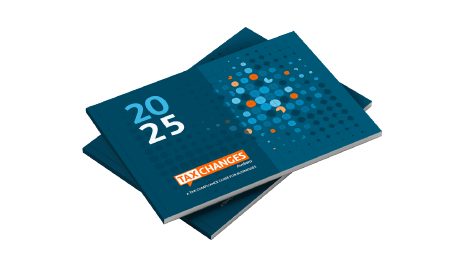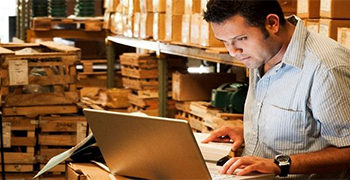
Maryland may tax business services, intellectual property
Maryland needs more tax revenue. Taxing business services and/or intellectual property and media rights could help the Old Line State fill a looming $3 billion budget gap.
Taxing B2B services
Currently, Maryland’s 6% sales and use tax applies to only select business-to-consumer (B2C) and business-to-business (B2B) services, including credit card reporting services, pay-per-view television, and security services.
Maryland SB1045 seeks to apply a 2.5% reduced sales tax rate to the following services starting July 1, 2025. The NAICS (North American Industry Classification System) codes identify the specific industries that would be impacted.
- Accounting, bookkeeping, billing, or payroll services (NAICS 5412)
- Appraisal services (NAICS 541990)
- Consulting services (NAICS 5416)
- Data or information technology services (NAICS 518, 519, or 5415)
- Experimental development services (NAICS 5417)
- Financial planning or tax preparation services (NAICS 5239 or 5412)
- Heavy truck or bus repair services (NAICS 8111)
- Landscaping and nonresidential building or property maintenance services that aren’t already taxable (NAICS 561210, 5616, or 5617)
- Lobbying, public relations, or marketing services (NAICS 5418)
- Office support services that aren’t already taxable (NAICS 561110, 5614, or 561910)
- Permanent or temporary employee or contractor placement services (e.g., NAICS 5613)
- Photography, design, or printing services (e.g., NAICS 541420, 541430, or 541490)
- Repair services (NAICS 8112 or 8113)
- System software or application software publishing services (NAICS 5415)
- Sport or performing art advertising services
- Valet or parking services, other than a public parking garage (NAICS 812930)
The fiscal analysis for SB 1045 estimates taxing these services at 2.5% (rather than the 6% general sales tax rate) would increase state revenues by about $944.1 million in fiscal year 2026 and $1.4 billion in fiscal year 2030.
Even at a reduced rate, taxing B2B services is controversial. The Council on State Taxation argues that this tax proposal “violates several principles of sound tax policy” and creates “pyramiding and a lack of transparency to both consumers and policy makers.”
Brian Smith, Senior Government Relations Director at Avalara, explains the difference between taxing B2C versus B2B transactions. “I look at taxing B2C services as simply an expansion of the sales tax base. Taxing B2B services is different: It’s a tax on business inputs, the process of providing services to businesses.”
Smith says taxing the provision of services would be comparable to taxing the manufacture of products sold for resale. “Is the provisioning of services akin to manufacturing?” he asks.
Yet Maryland lawmakers are in a bind. While the state is planning to trim more than $2 billion from its budget, it will need to increase tax collections by roughly $1 billion to balance its budget. Sales tax and income tax are the only two taxes big enough to generate that amount of revenue.
Maryland’s sales tax is “woefully outdated”
During a Budget and Taxation Committee discussion of SB 1045 (March 12, 2025), Maryland State Senator Shelly L. Hettleman called Maryland’s sales tax structure “woefully outdated.” While goods and services made up roughly an equal share of the economy (50% each) when Maryland introduced sales tax in 1947, goods comprised just 37% of Maryland’s economy in 1997 and 31% of the economy in 2022.
Taxing more services would produce a “diversified revenue stream,” said Hettleman, and provide “a stable source of income even during economic downturns.”
Why tax the services listed above and not others? Several legislators speaking on behalf of SB 1045 pointed out that some of these services are taxed in other states. But they also said the list of services was open to discussion.
Businesses against broadening the sales tax base
Representatives from numerous businesses and organizations urged the Legislature to reject SB 1045. Many said taxing these services would be particularly hard on small businesses that need to purchase the affected services; larger businesses often handle many such tasks in-house.
Several people also said that by taxing some services but not others, the bill picks winners and losers. Responding to this criticism, Senator J.B. Jennings asked whether it would be better for Maryland to tax all services at an even lower rate. No one jumped at that.
Maryland may tax intellectual property and media rights
Taxing the B2B services listed above isn’t the only contentious tax proposal up Maryland’s sleeve. The amended version of HB 352 seeks to place a 3% sales and use tax on:
- Data or information technology (IT) services (NAICS 518, 519, or 5415)
- System software or application software publishing services (NAICS 5132)
- The licensing of media or software rights and other intellectual property, including:
- Rights to produce and distribute computer software protected by copyright
- Rights to use intellectual property, including that protected by copyright or trademark
- Sporting event broadcast and other media rights
- Broadcast television programs
- Specialty programming content distribution
- Syndicated media content
While the bill proposes a reduced sales tax rate (3%) for the above, it allows for a higher rate: “If a different rate … could be applied to a sale or use of tangible personal property, a digital code, a digital product, or a taxable service, the higher rate shall apply to the sale.”
Maryland will probably face pushback on taxing intellectual property and media rights, as it has on taxing B2B services. But businesses will likely be pleased to learn the state has tabled a proposed retail delivery fee.
Maryland tables retail delivery fee
The first iteration of HB 352 included a 75-cent fee on retail deliveries of taxable tangible property in the state. That language was struck from the amended version of the bill.
Several other states are still considering retail delivery fees, which are proving to be a steady revenue stream for Colorado and Minnesota. Colorado’s $0.29-per-delivery fee generated $92.9 million in fiscal year 24, while Minnesota’s newer $0.50-per-delivery fee is projected to bring in $59 million fiscal year 25, its first year.
How will Maryland increase tax revenue?
Moody’s Ratings Agency predicts federal austerity measures to “pose a greater threat to Maryland … than to any other state.” Several members of the Budget and Taxation Committee said they don’t want to increase taxes, but they need to increase revenue somehow.
We’ll update this blog post when we know more. In the meantime, businesses facing new or changing sales tax obligations may be interested in learning how automating sales and use tax calculation, collection, and remittance can help streamline compliance.

Your competitors live by this annual report
Trusted by professionals, this valuable resource simplifies complex topics with clarity and insight.
Stay up to date
Sign up for our free newsletter and stay up to date with the latest tax news.













